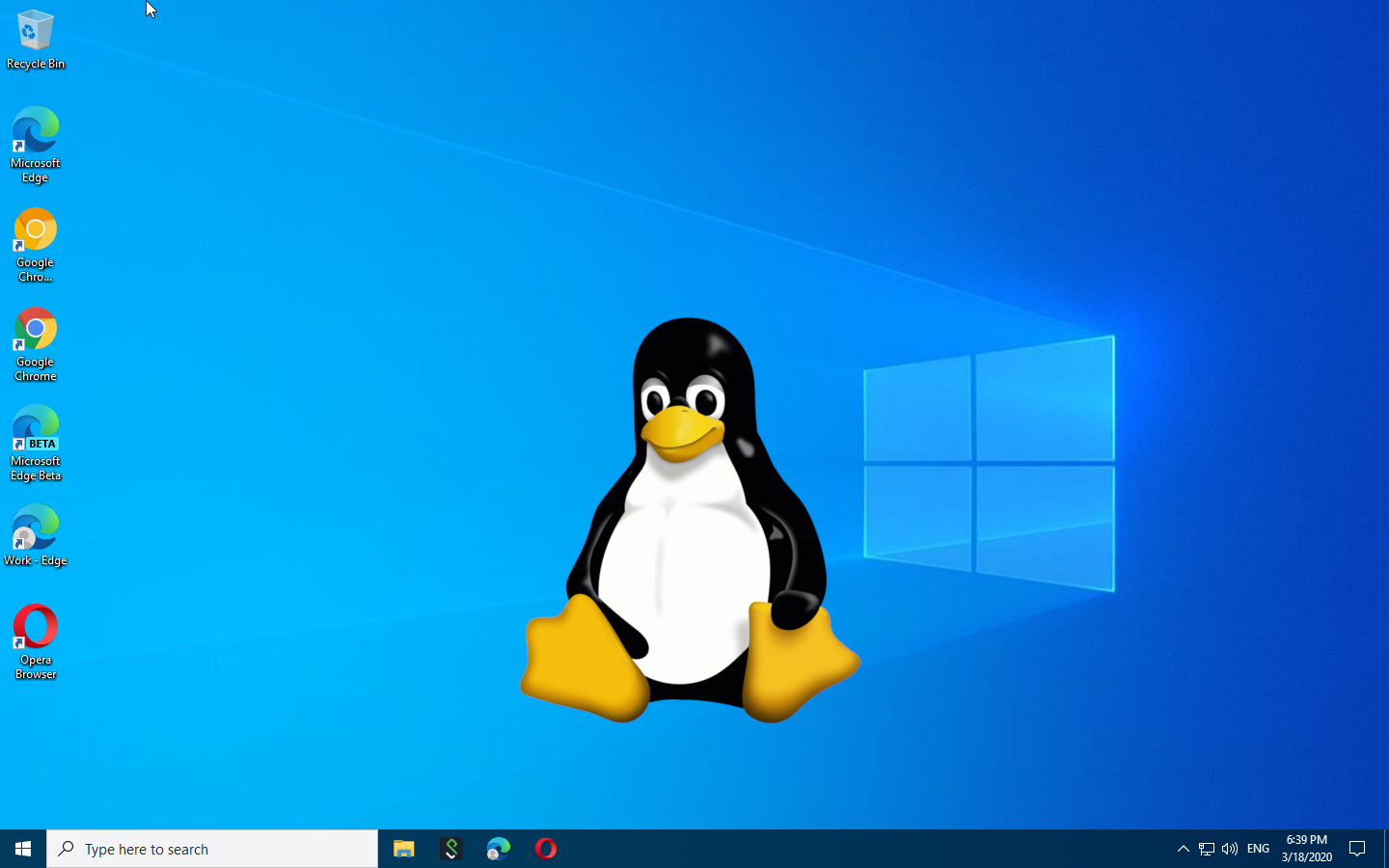As I type this out, I'm currently waiting for a new laptop to arrive from System76, on which I plan to do most of my development. However, in the interim, I'm trying to move my personal projects away from my "normal" workstations (work-provided, corp-ified devices) and onto devices which are entirely owned by me.
At the moment, this means I'm running on a Windows 10 device, which has WSL 2.0 up and running with an Ubuntu image. Once I'm up and running with a tmux session, it does feel pretty naturally like Linux, but there are some quirks, which I'll dive into within this post.
Host Filesystem Access
Right off the bat, as I tried downloading some files for usage within WSL, accessing the "Downloads" directory of my host computer became a blocker.
To get ourselves unstuck, lets take a look at the /mnt directory within a WSL shell:
~ $ ls /mnt/
a c d e f g wsl
As we can see here, all our drives are visible. Querying further:
~ $ df -hT
Filesystem Type Size Used Avail Use% Mounted on
/dev/sdd ext4 251G 3.8G 235G 2% /
tmpfs tmpfs 13G 274M 13G 3% /mnt/wsl
...
tools 9p 931G 357G 574G 39% /init
none devtmpfs 13G 0 13G 0% /dev
none tmpfs 13G 20K 13G 1% /run
none tmpfs 13G 0 13G 0% /run/lock
none tmpfs 13G 0 13G 0% /run/shm
none tmpfs 13G 0 13G 0% /run/user
tmpfs tmpfs 13G 0 13G 0% /sys/fs/cgroup
A:\ 9p 233G 205G 29G 88% /mnt/a
C:\ 9p 931G 357G 574G 39% /mnt/c
D:\ 9p 100M 47M 54M 47% /mnt/d
E:\ 9p 437G 109G 329G 25% /mnt/e
F:\ 9p 495G 172G 324G 35% /mnt/f
G:\ 9p 112G 85G 27G 77% /mnt/g
As we can see here, all the drives are mounted under this /mnt path. If we look closer, they're also using a "9P filesystem", which actually means that the implementation of this subsystem uses a networked filesystem technology to treat the WSL instance as a "client", and the native Windows filesystem as a "server", emulating a natural Linux filesystem by translating requests through this protocol. Windows devs have written about this technology choice, connecting client and host over AF_UNIX sockets.
I was surprised to see remnants of Plan 9 here, but hey, seems like a pretty cool technology choice. If it works right away, it beats building a new proprietary protocol format.

Comments
Post a Comment